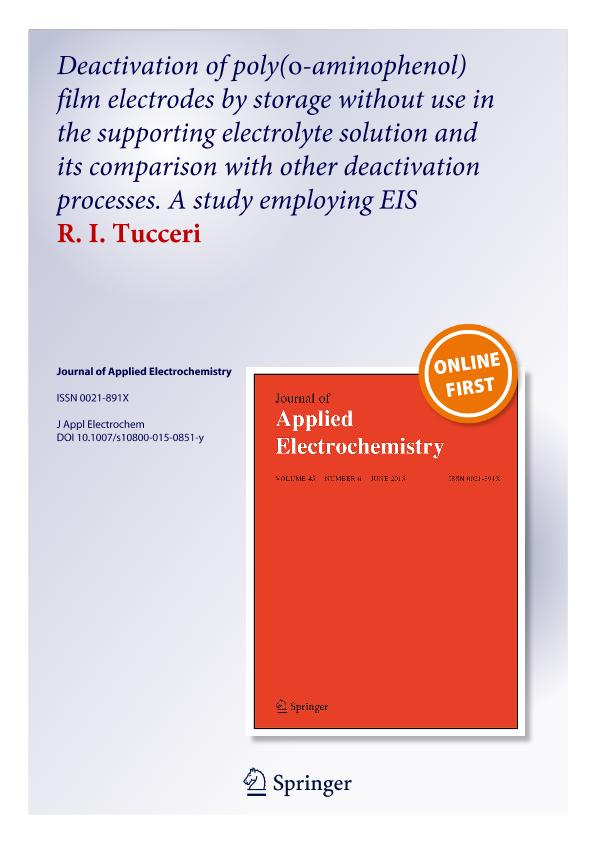Artículo
Deactivation of poly(o-aminophenol) film electrodes by storage without use in the supporting electrolyte solution and its comparison with other deactivation processes. A study employing EIS
Fecha de publicación:
05/2015
Editorial:
Springer
Revista:
Journal of Applied Electrochemistry
ISSN:
0021-891X
Idioma:
Inglés
Tipo de recurso:
Artículo publicado
Clasificación temática:
Resumen
Abstract The effect of storage time without use (STWU) in the supporting electrolyte solution on the charge-trans- port parameters of poly(o-aminophenol) (POAP) film electrodes was studied by electrochemical impedance spectroscopy. STWU decreases the charge-transport rate of the polymer. This effect is herein called deactivation. Impedance diagrams of both nondeactivated and deacti- vated films in contact with a solution containing the p- benzoquinone/hydroquinone redox couple were interpreted on the basis of a model formulated for homogeneous conducting polymers, where the bathing electrolyte con- tains a redox pair that provides the possibility for electrons to leak from the film surface. Dependences of diffusion coefficients for electron (De) and ion (Di) transport and interfacial resistances related to ion (Rfjs) and electron
(Rmjf ; Re) transfer across the polymer/solution and metal/polymer interfaces, respectively, on the degree of deacti- vation (hd) of the polymer were obtained. These depen- dences were compared with those from previous work for POAP films deactivated by employing other procedures, such as high positive potential limits, soaking in a ferric ion solution, and prolonged potential cycling.
Archivos asociados
Licencia
Identificadores
Colecciones
Articulos(CCT - LA PLATA)
Articulos de CTRO.CIENTIFICO TECNOL.CONICET - LA PLATA
Articulos de CTRO.CIENTIFICO TECNOL.CONICET - LA PLATA
Articulos(INIFTA)
Articulos de INST.DE INV.FISICOQUIMICAS TEORICAS Y APLIC.
Articulos de INST.DE INV.FISICOQUIMICAS TEORICAS Y APLIC.
Citación
Tucceri, Ismael Ricardo; Deactivation of poly(o-aminophenol) film electrodes by storage without use in the supporting electrolyte solution and its comparison with other deactivation processes. A study employing EIS; Springer; Journal of Applied Electrochemistry; 45; 10; 5-2015; 1123-1132
Compartir
Altmétricas




